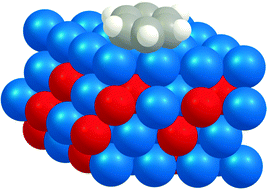Benzeneadsorption on binary Pt3M alloys and surface alloys: a DFT study†
Abstract

- This article is part of the themed collection: Interfacial Phenomena in (De)hydrogenation Reactions
* Corresponding authors
a
Laboratorium voor Chemische Technologie, Universiteit Gent, Krijgslaan 281 S5, B-9000 Gent, Belgium
E-mail:
MarieFrancoise.Reyniers@UGent.be

 Please wait while we load your content...
Something went wrong. Try again?
Please wait while we load your content...
Something went wrong. Try again?
M. K. Sabbe, L. Laín, M. Reyniers and G. B. Marin, Phys. Chem. Chem. Phys., 2013, 15, 12197 DOI: 10.1039/C3CP50617G
To request permission to reproduce material from this article, please go to the Copyright Clearance Center request page.
If you are an author contributing to an RSC publication, you do not need to request permission provided correct acknowledgement is given.
If you are the author of this article, you do not need to request permission to reproduce figures and diagrams provided correct acknowledgement is given. If you want to reproduce the whole article in a third-party publication (excluding your thesis/dissertation for which permission is not required) please go to the Copyright Clearance Center request page.
Read more about how to correctly acknowledge RSC content.
 Fetching data from CrossRef.
Fetching data from CrossRef.
This may take some time to load.
Loading related content
